Overgrown Ruins
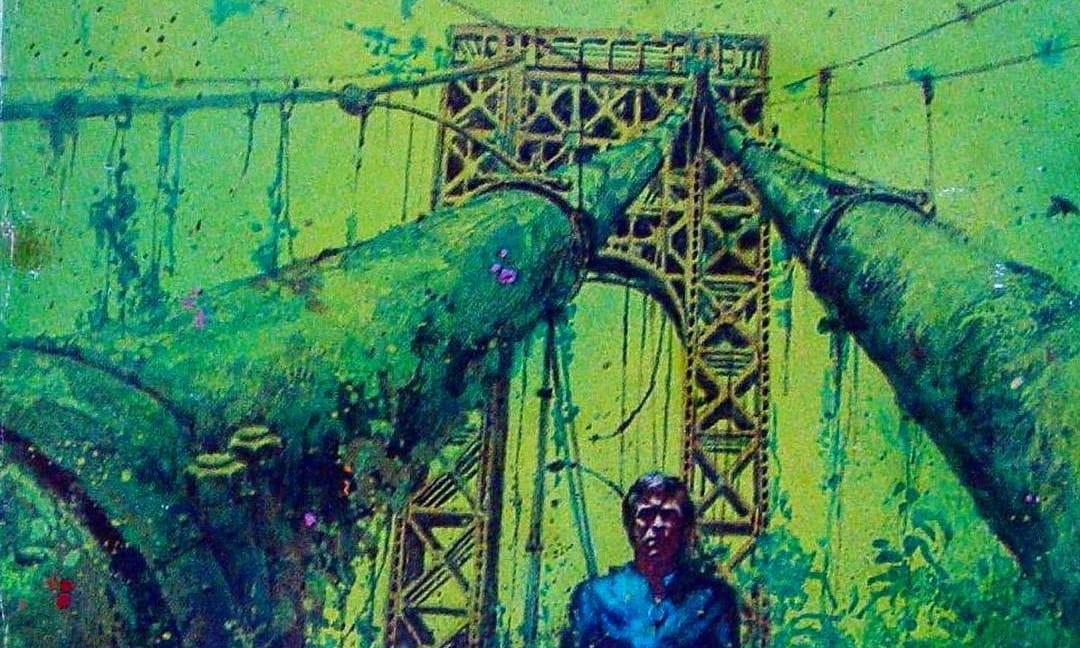
Science fiction has strong roots in early 1900s adventure pulp magazine stories, and a handful of story tropes reflect that.
Add a few extra limbs to the giant tiger attacking your explorers, and you're suddenly on Barsoom; Remove the spacesuit from that skeleton in your ancient temple, and you're back in the Hyborian Age.
Today we're taking a look through the retro science fiction illustrations related to one classic adventure trope, the overgrown ruins of a building or vessel long lost to the untamed alien jungle.
Wrecked spaceships are a popular area of focus, naturally. Here's a Henri Lievens illustration, done as a 1972 cover to a French translation of The Far-Out Worlds of A. E. van Vogt.
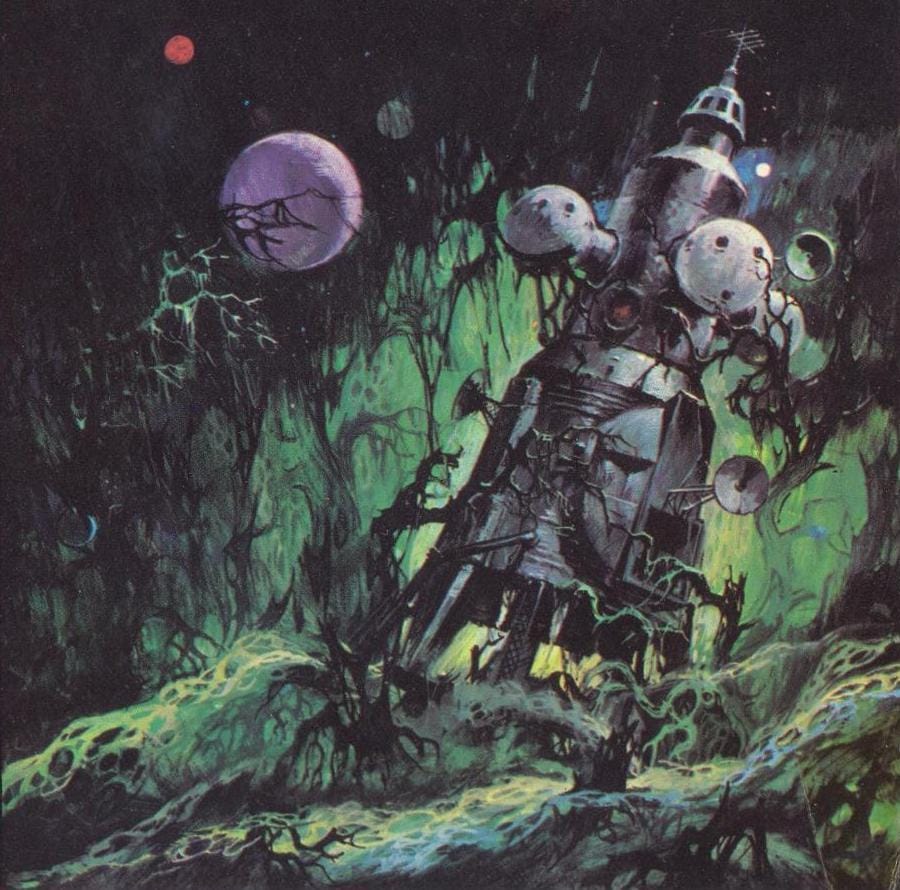
Tim White has this colorful 1974 spaceship, used as cover art for Monument, by Lloyd Biggle Jr.
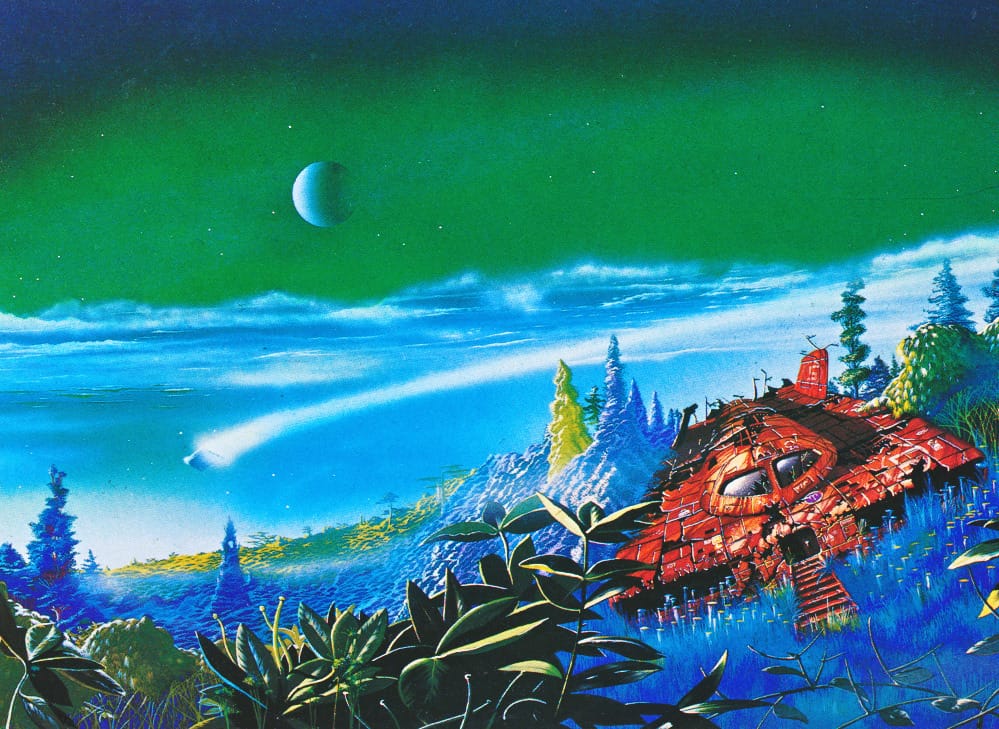
Tony Roberts includes an actual ship on this cover to Samuel R. Delany's Babel-17, along with a spaceship giving it an exploratory fly-by.
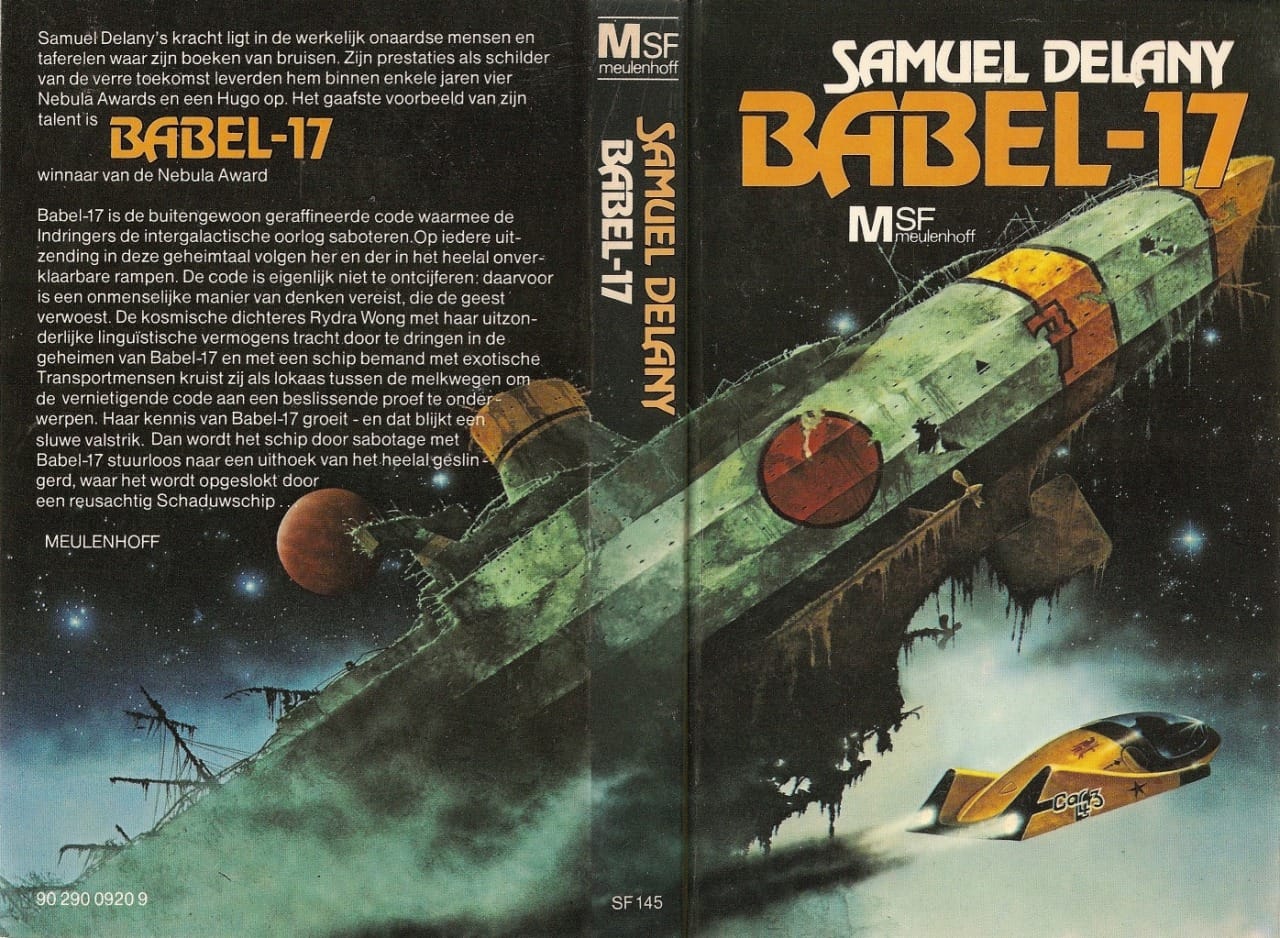
I'd be remiss not to mention the classic Terran Trade Authority art collection, Spacewreck: Ghostships and Derelicts of Space, of course. Here's Fred Gambino's 1979 cover art, complete with lush vines and a one-eyed alien skeleton.
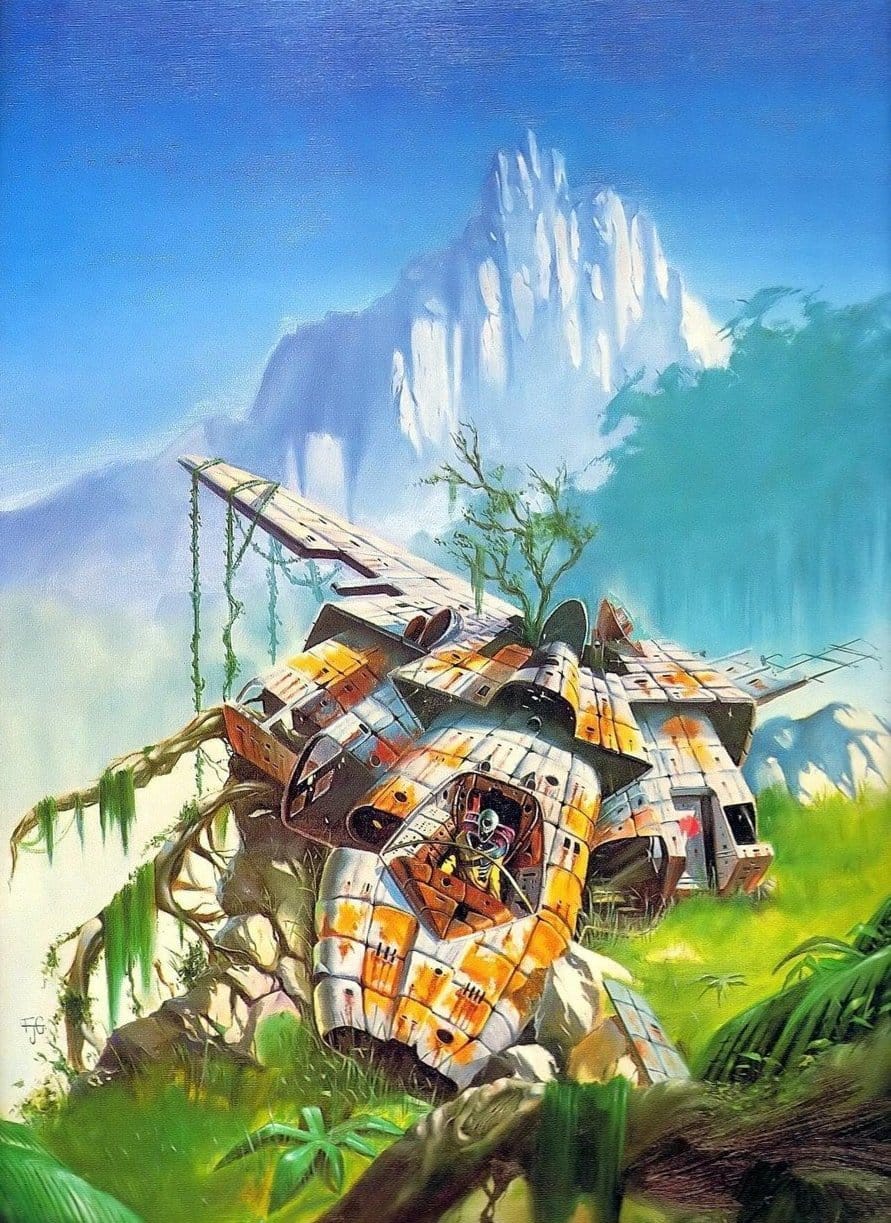
Most of the actual spacewrecks inside its cover aren't overgrown – many are in outer space, empty deserts, or blocks of ice that are also in space. This ancient alien missile battery by Bob Layzell is one exception.
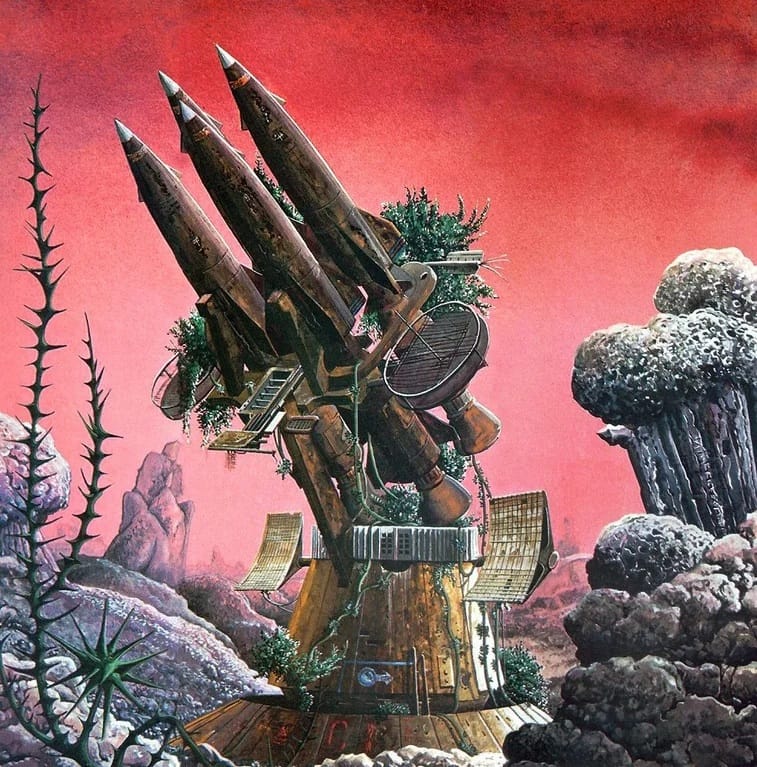
Colin Hay has a beautiful two-page spread in the book, too. It's yet another example of Hay's penchant for showcasing sprawling structures above a tiny landscape at the very bottom of the frame, as readers of my Ocean Outposts issue may recall.
Reminds me of that last shot in The Fablemans.
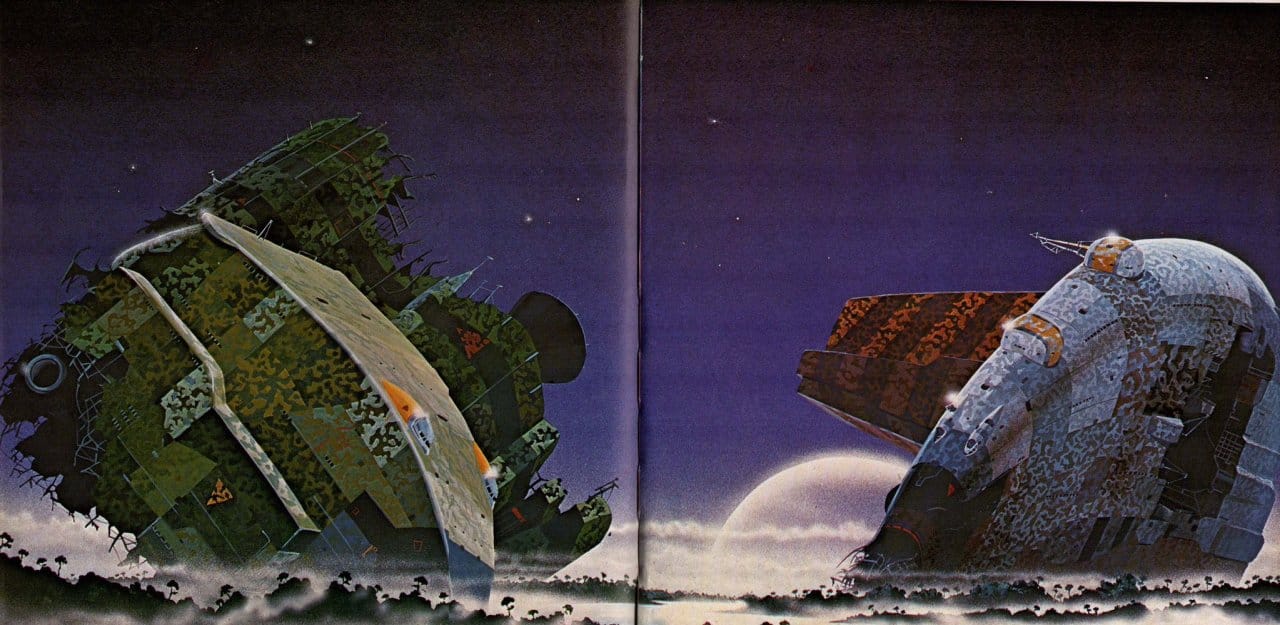
Certain artists seem to really enjoy sci-fi ruins. Tony Roberts and Bob Layzell are among them, and Tim White's already making a repeat appearance with this building.
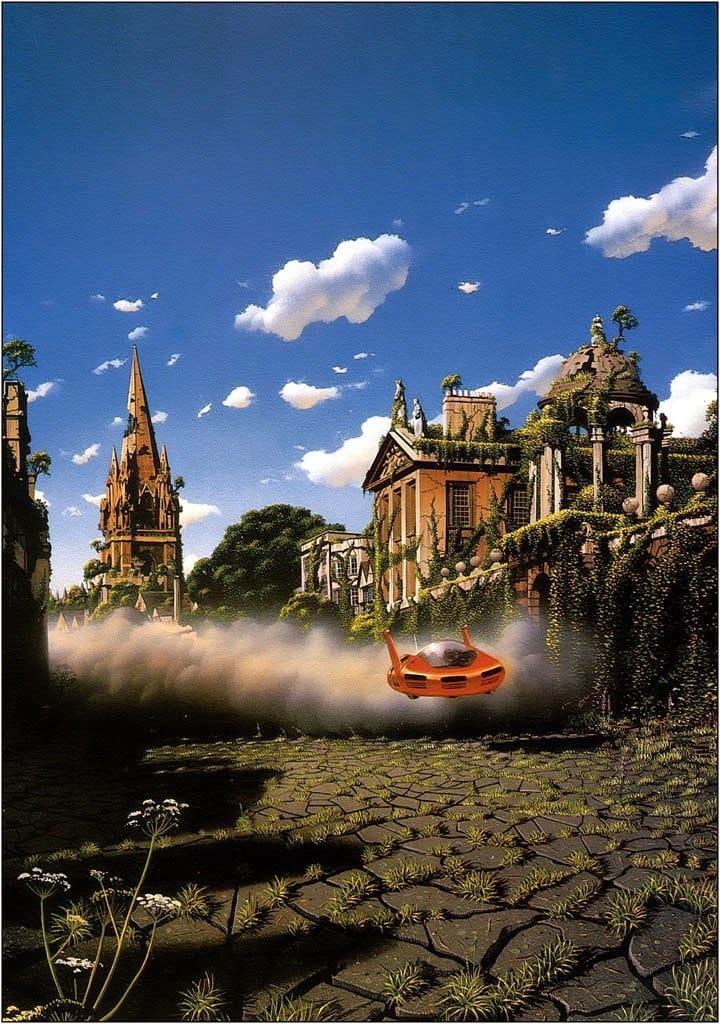
Bob Layzell's still at it, by the way: Here are a few casually photographed 2010s artworks from his Facebook page.
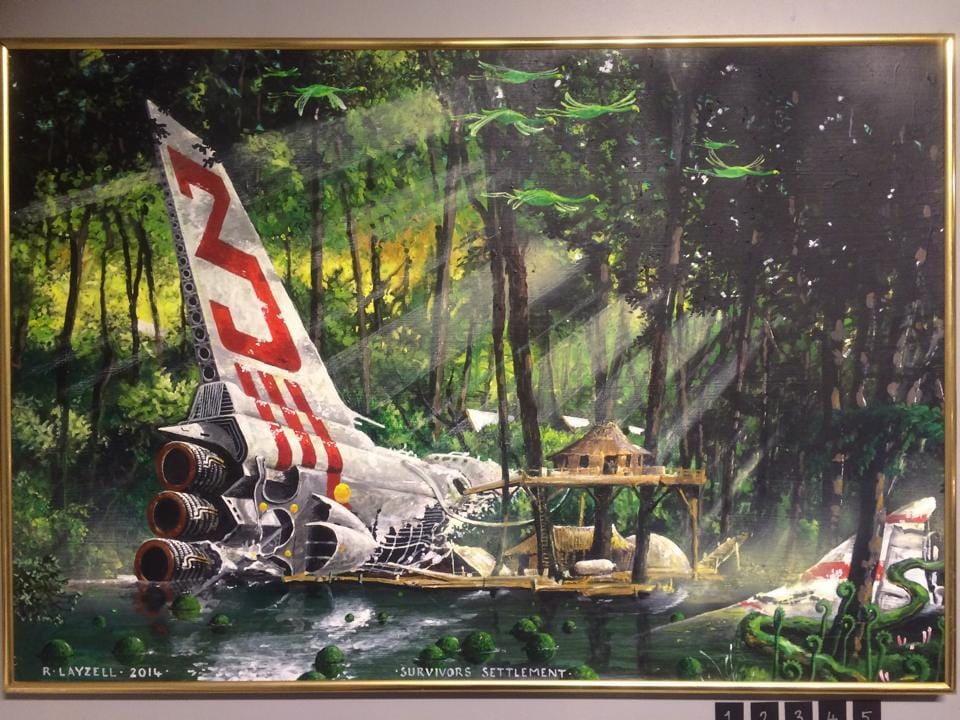
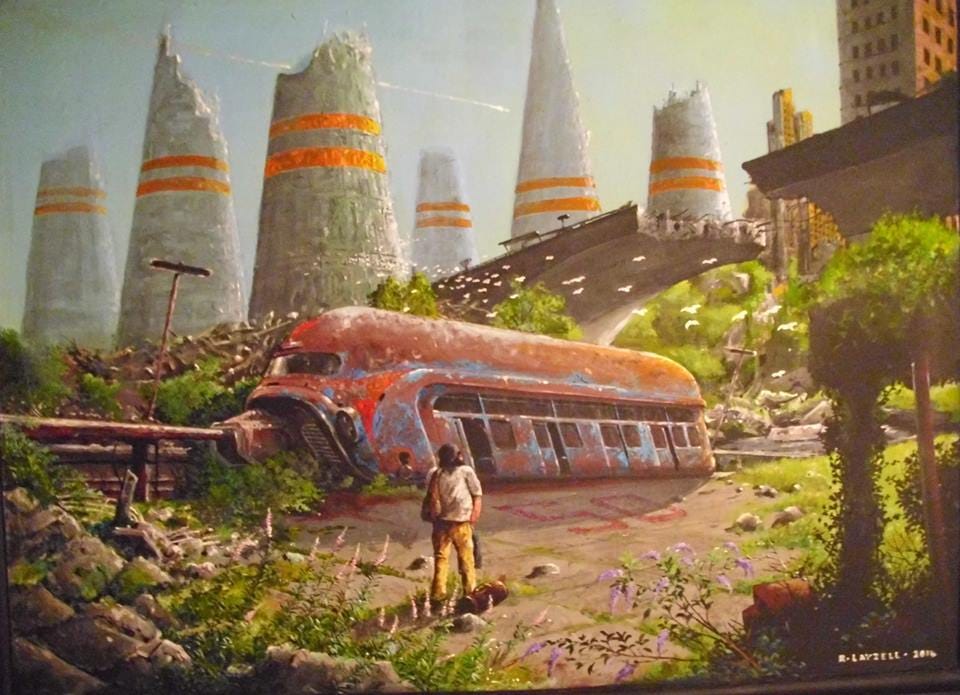
I'm not sure if that spherical spaceship on Paul Lehr's 1977 cover for The Embedding, by Ian Watson, is actually overgrown.
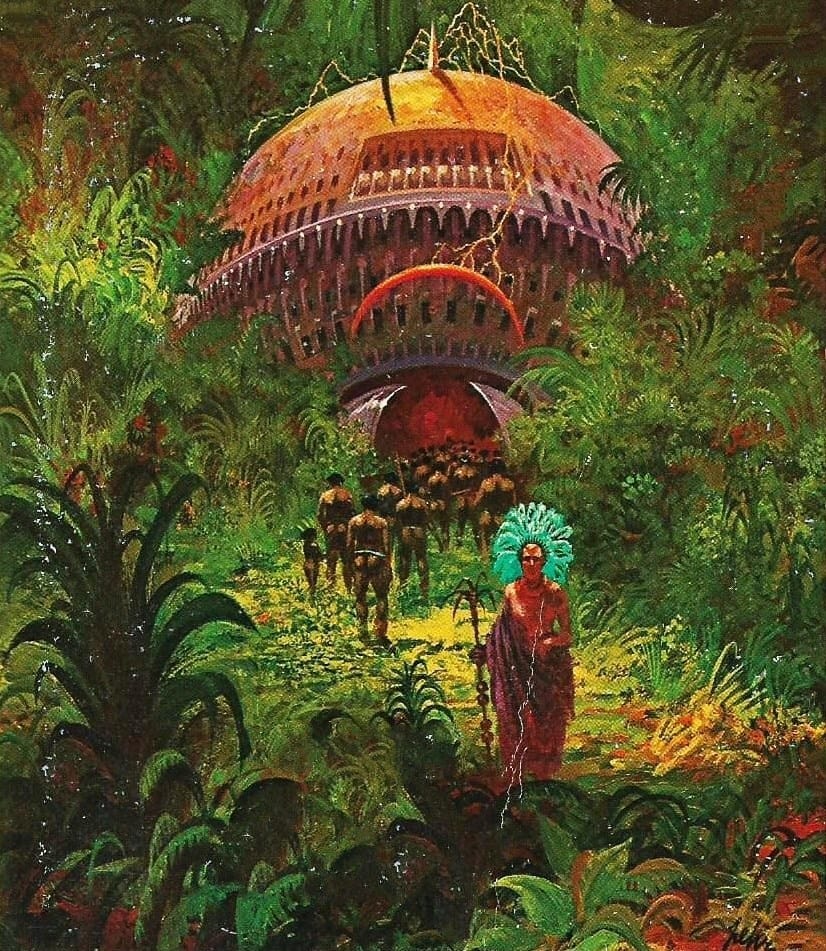
Tim White makes yet another appearance with his 1979 cover to Lord of the Spiders, by Michael Moorcock.
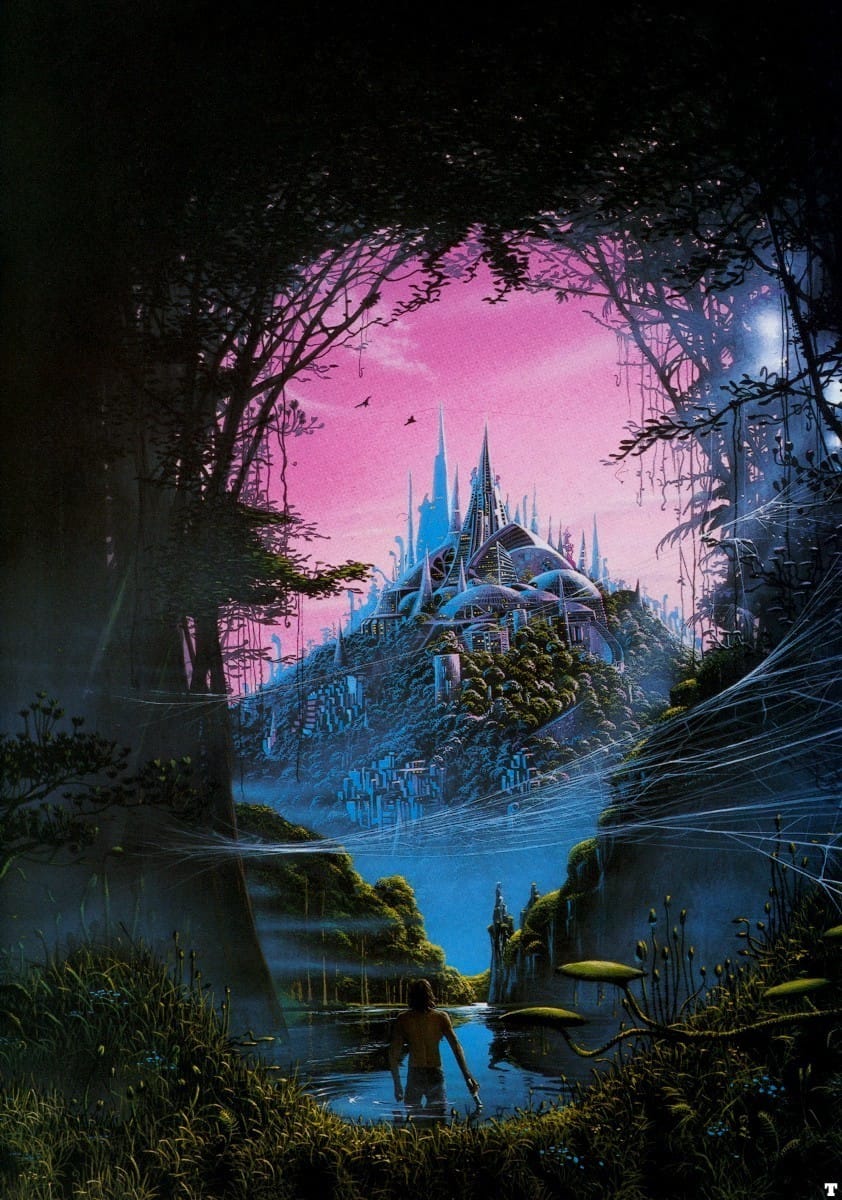
Mark Salwowski takes the overgrown ruins indoors with his 1987 cover to Brian W. Aldiss' Non-Stop.
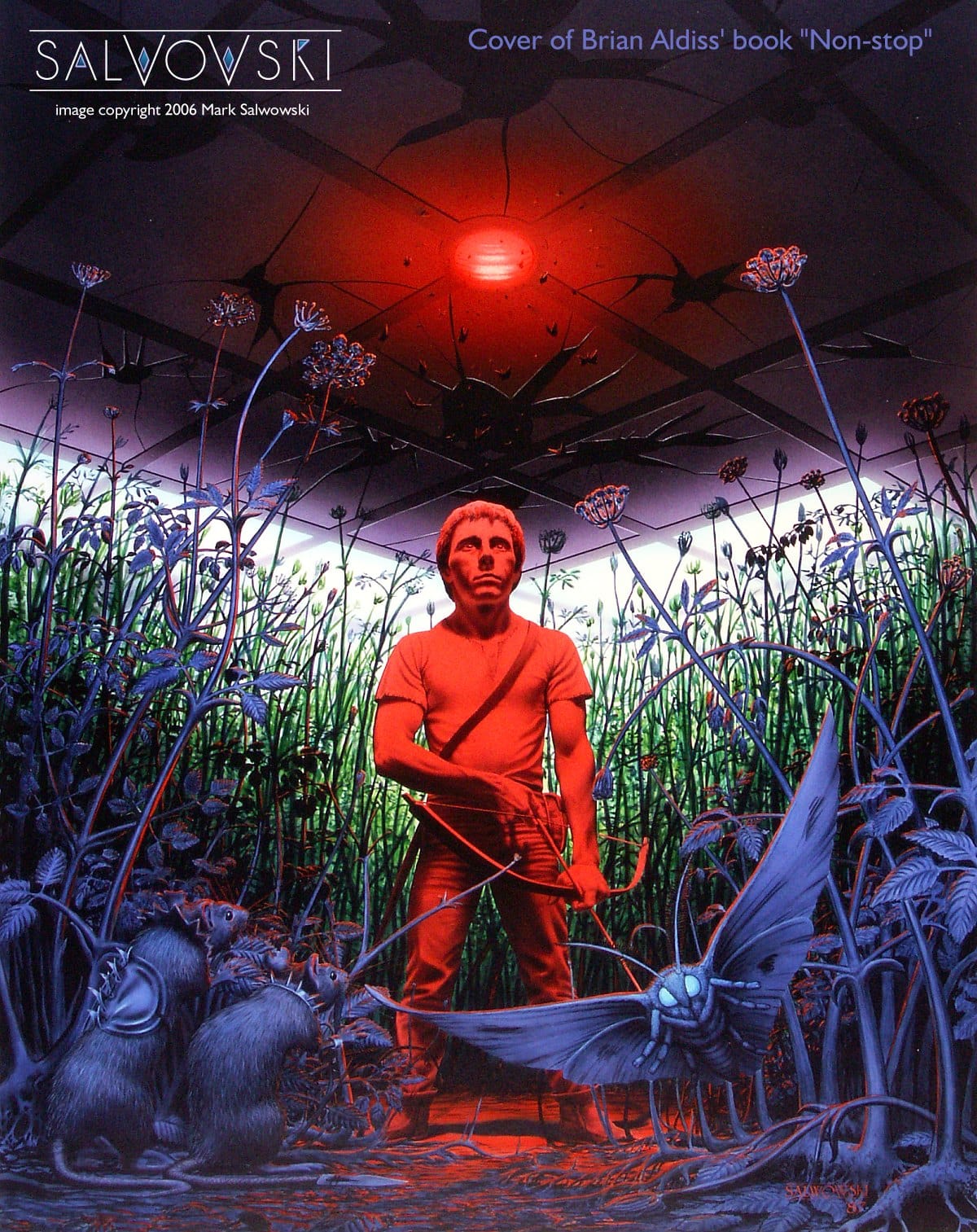
Ron Walotsky did a similar cover for the same title two years later:
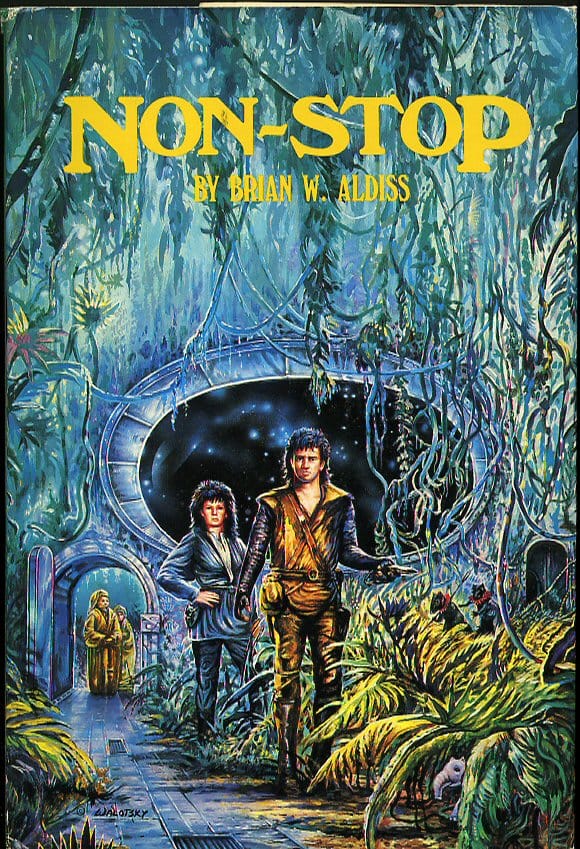
Vicente Segrelles' cover for the 1978 German translation of Armada of Antares, by Alan Burt Akers, offers a fascinating version of the overgrown city: Not only is it floating in mid-air, but only the right-hand island is overgrown.
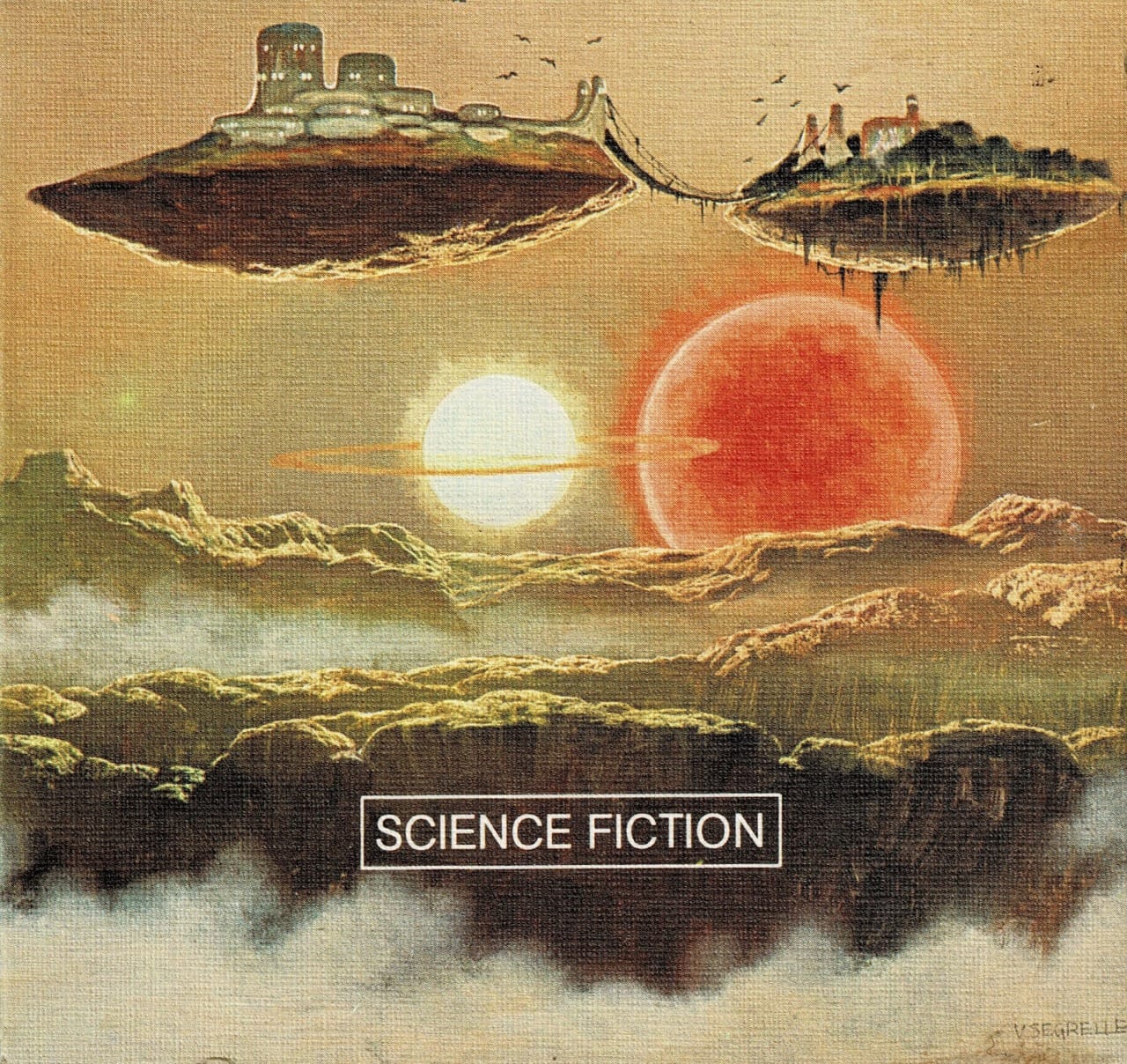
One more overgrown Tim White for the road: His 1978 cover to Assignment in Eternity Vol 2, by Robert A. Heinlein. The out-of-focus grass at the bottom is a genius touch.
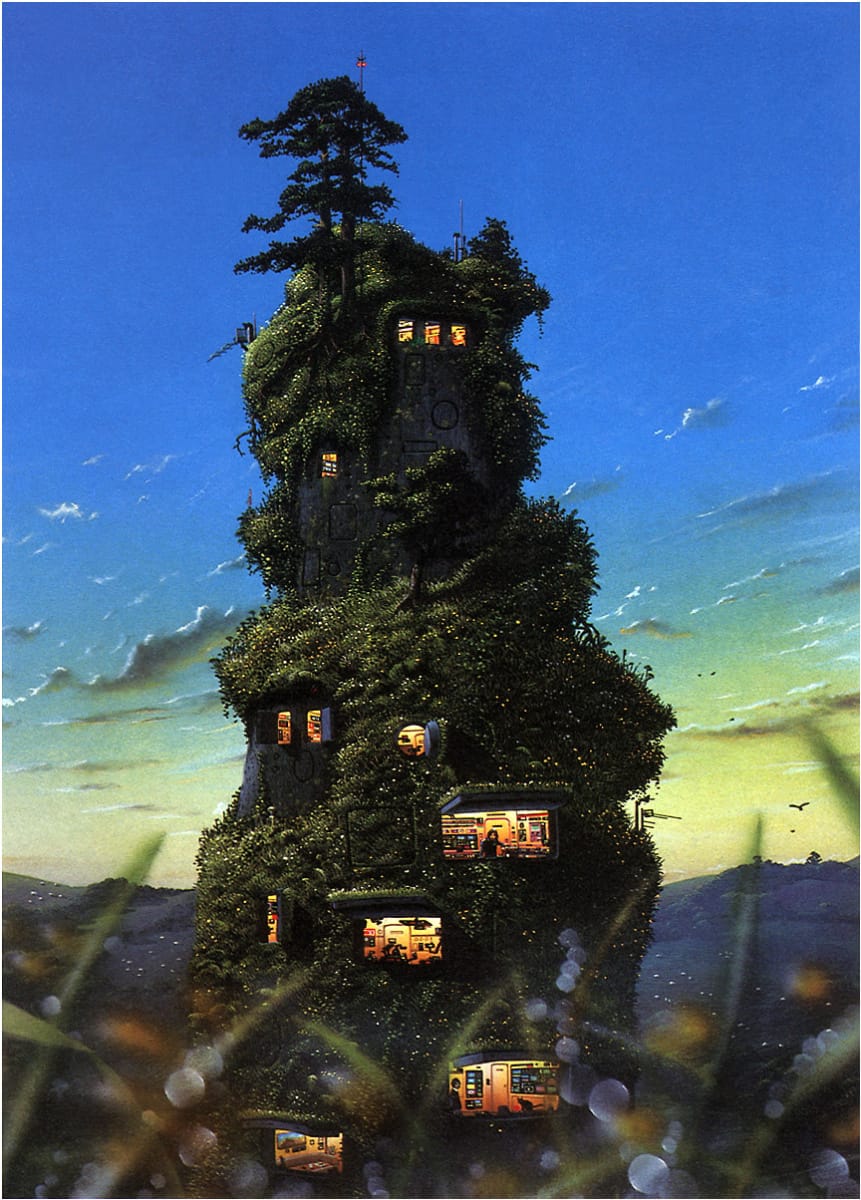
I love seeing modern buildings so fully overgrown that the viewer thinks it's just a part of nature at first.
My favorite all-timer example is this 1979 Dean Ellis cover art for Bander Snatch, by Kevin O'Donnell, Jr. – I actually had seen it a few times before I looked closely enough to make out the skyscrapers and lampposts.
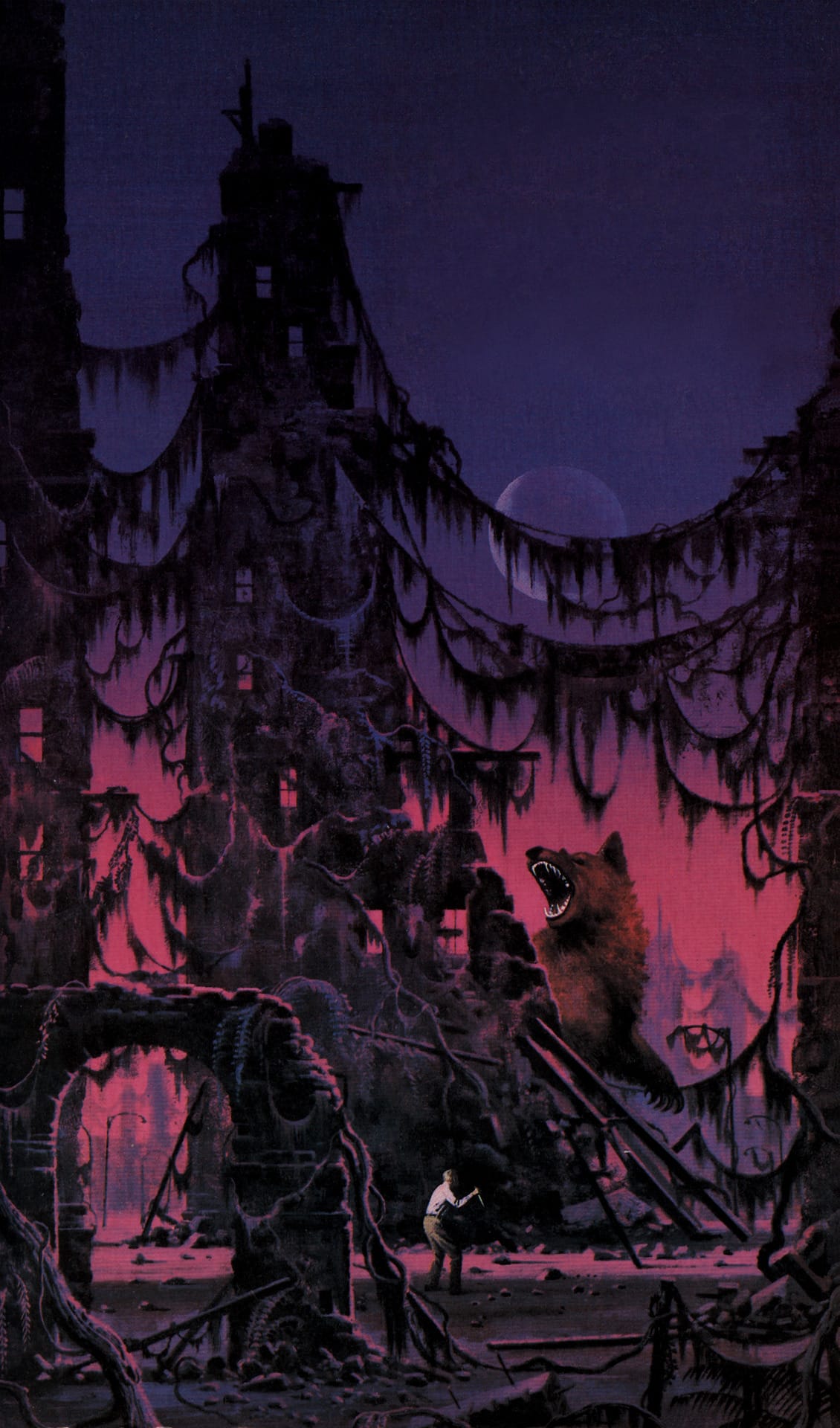
The post-apocalyptic scene on the uncredited 1974 cover to D. Keith Mano's The Bridge is another great example.
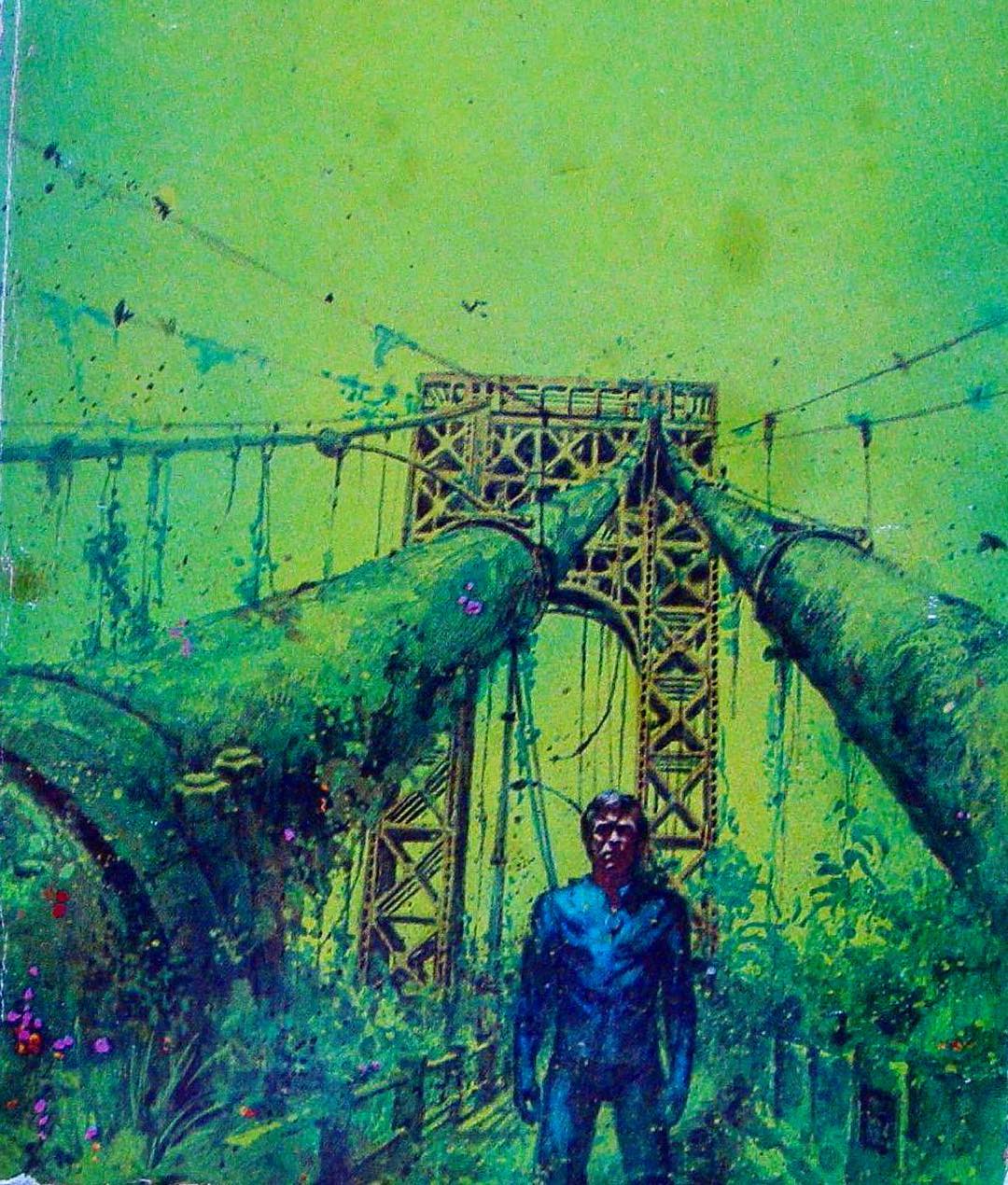
Another uncredited post-apocalyptic cover here, this time for a 1987 edition of Andre Norton’s Star Man’s Son.
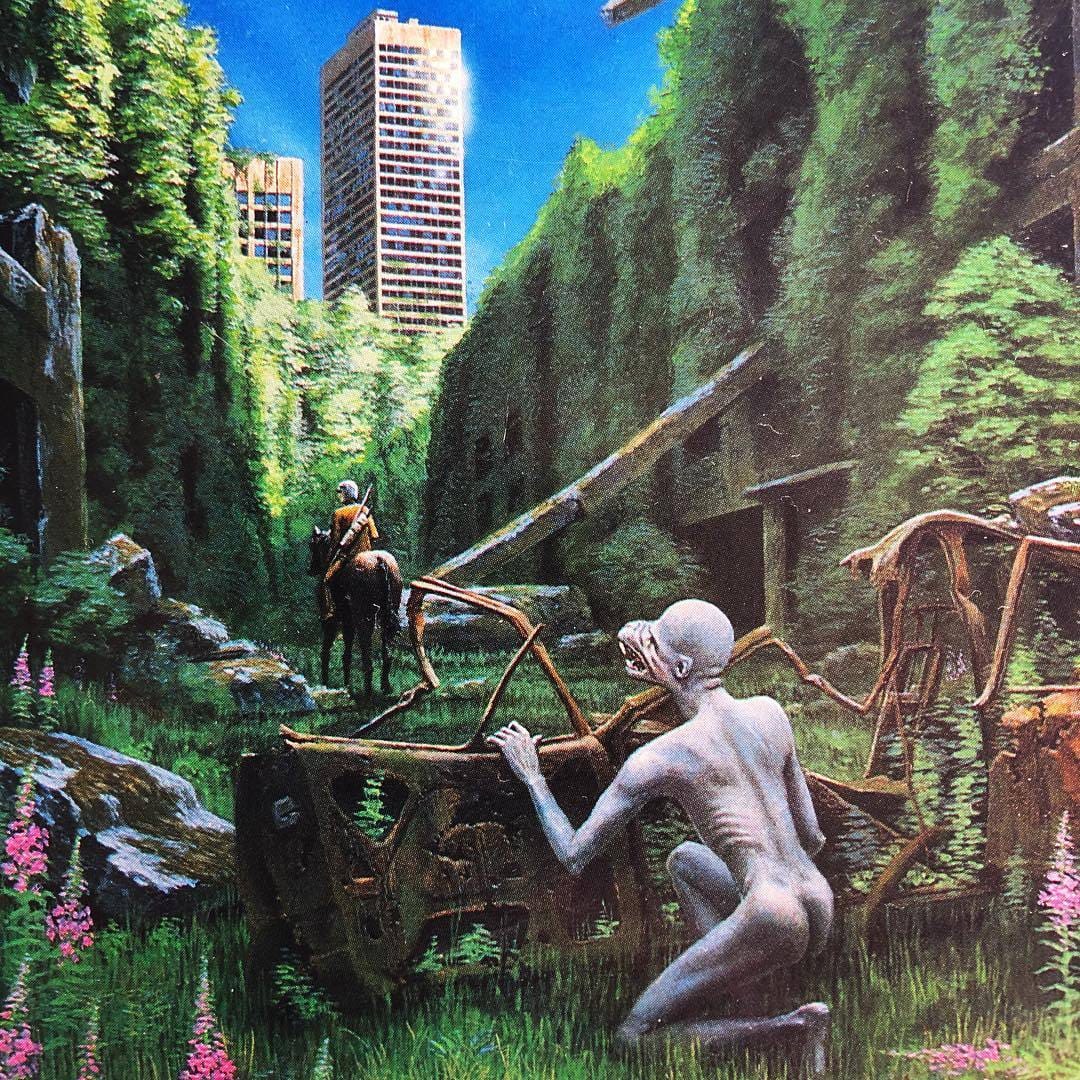
Okay, I thought I was done with Tim White illustrations, but I can't resist ending on this one, his 1976 cover for A Scent of New-Mown Hay, a sci-fi horror novel by John Blackburn featuring fungal zombies.
White loved overgrown sci-fi so much, even his human beings are overgrown!
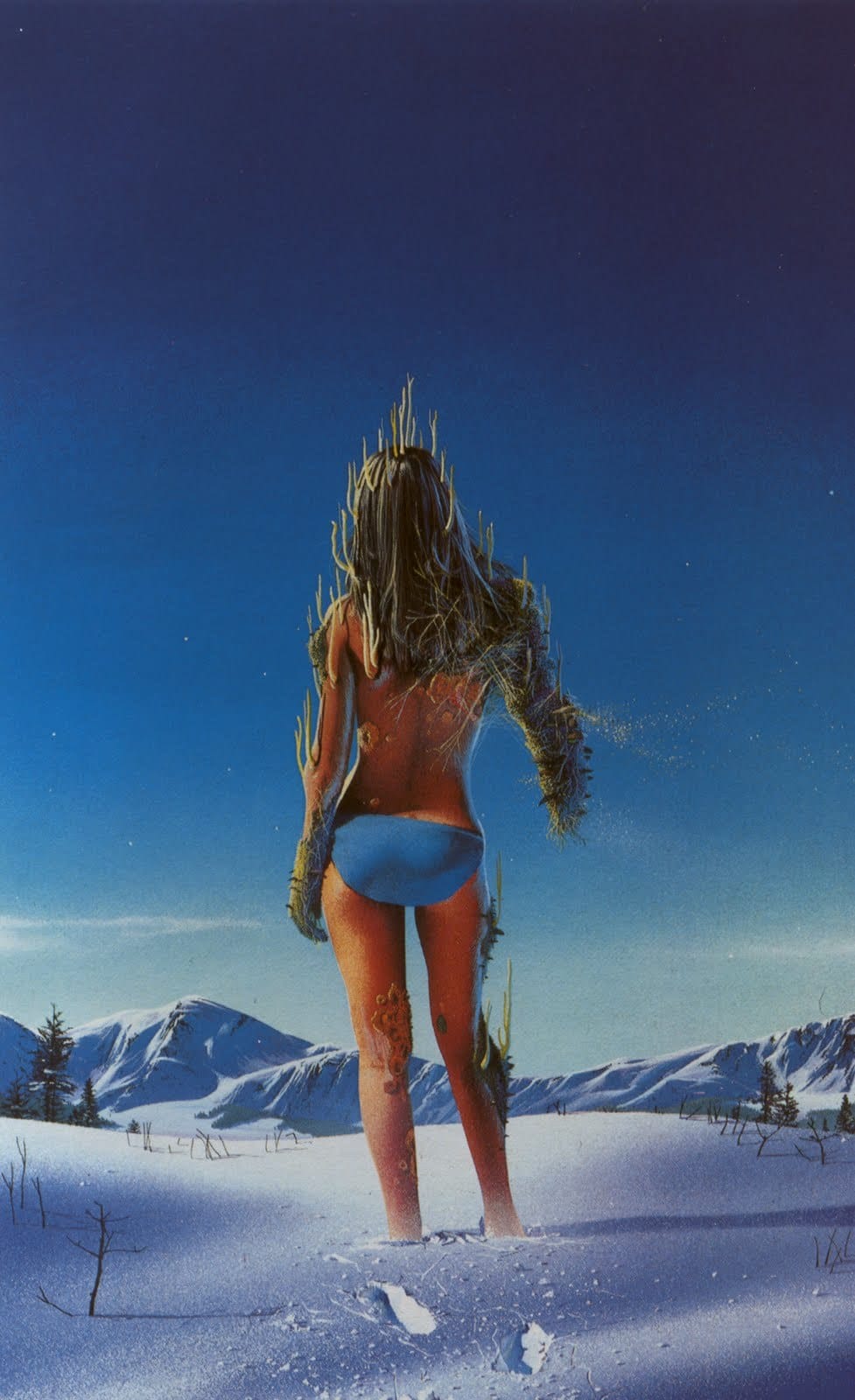
Music rec: Here's a Cyberpunk Darksynth playlist I've been enjoying.
Next Time: Fish-People